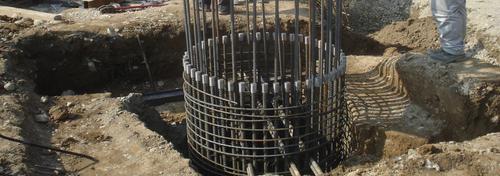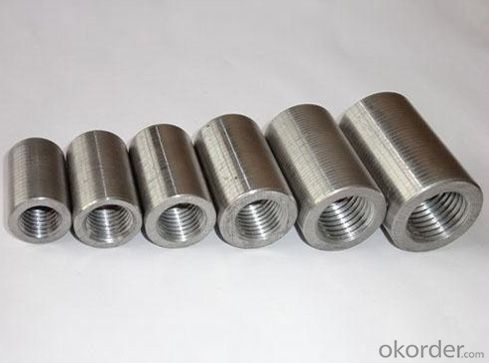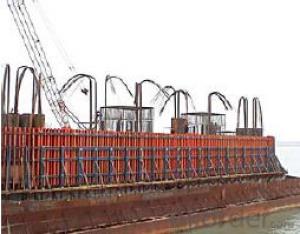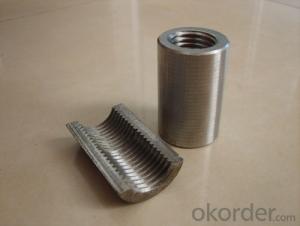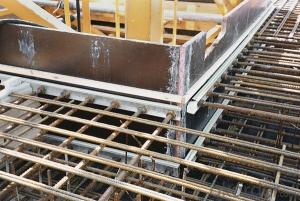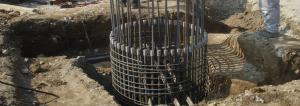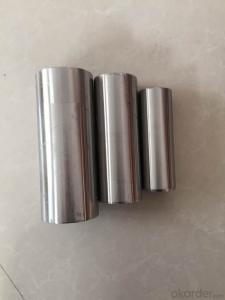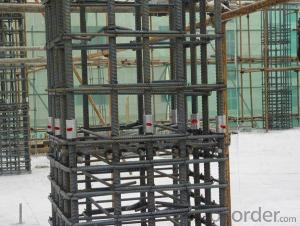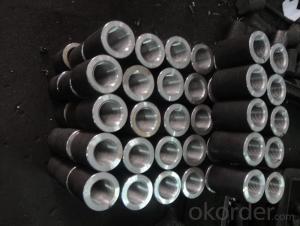Steel Coupler Rebar Iron Scaffolding Qes Scaffolding With Low Price
- Loading Port:
- Shanghai
- Payment Terms:
- TT OR LC
- Min Order Qty:
- 10000 pc
- Supply Capability:
- 10000000 pc/month
OKorder Service Pledge
OKorder Financial Service
You Might Also Like
Steel Coupler Rebar Iron Scaffolding Qes Scaffolding With Low Price
1.Description:
Lapped joints are not always an appropriate means of connecting rebar. The use of Steel Rebar Couplers can simplify the design and construction of reinforced concrete and reduce the amount of reinforcement required.
The threaded steel coupler system is designed as a threaded reinforcement connection with 100% load transmission. The steel coupler rebar connection system is suitable for both static and dynamic load transmission in construction joints.
The coupler is designed as a threaded reinforcement connection for formed construction joints. Reinforcement work is normally carried out on both sides of the construction joint using lap joints or one side is anchored. The bar lengths are based on the structural analysis requirements of the building component and are calculated from anchorage and lap lengths.
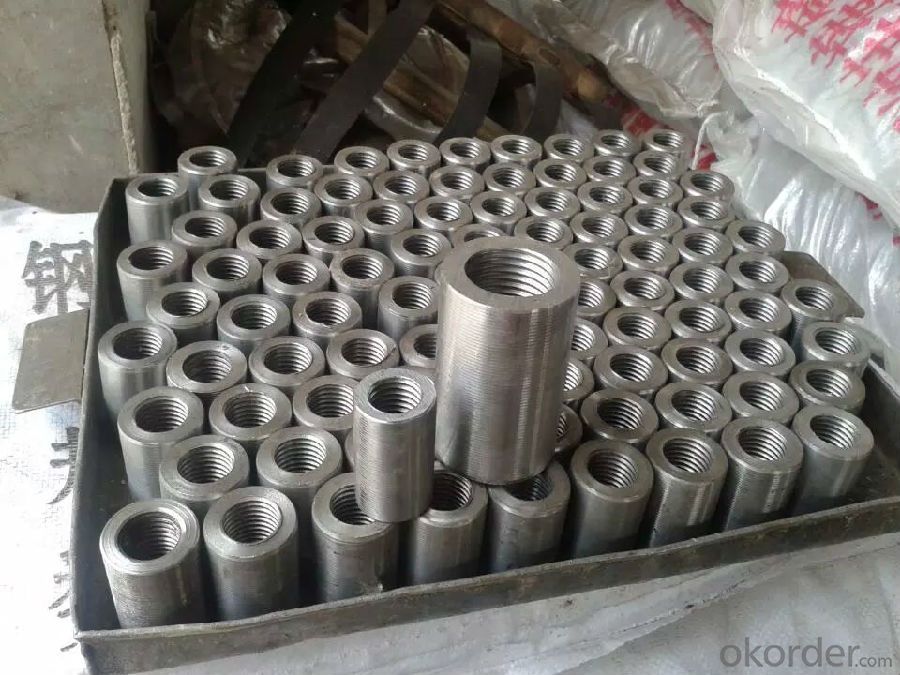
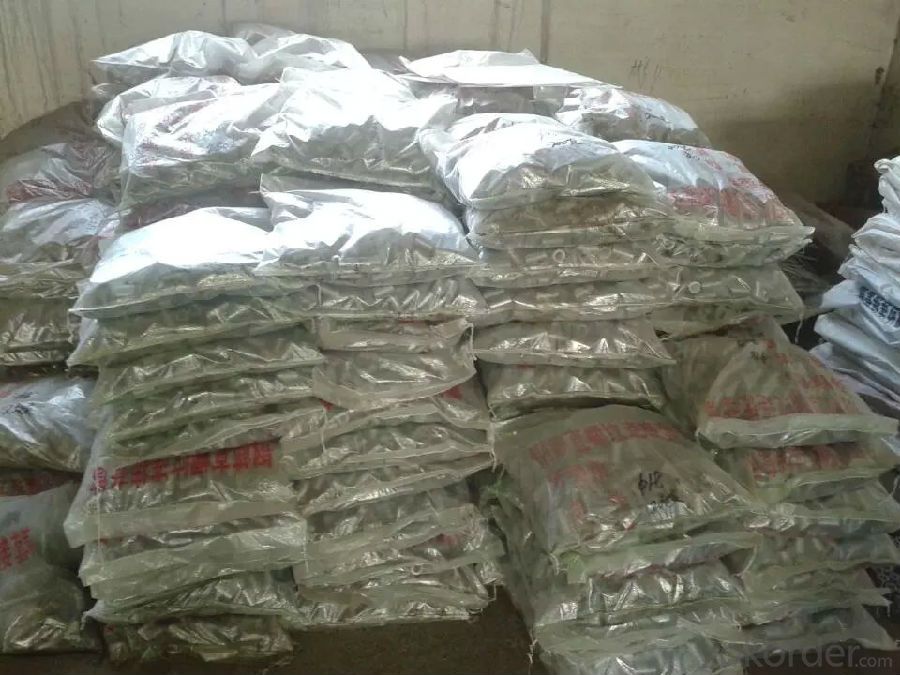
2.Advantages of Steel Coupler Rebar Lift Scaffolding Galvanized Scaffolding Tube with Low Price:
The coupler system provides the opportunity to connect rebars quickly, easily and cost effectively, even when large rebar diameters are used. This makes the steel coupler rebar range a logical extension to our rebendable CNBM reinforcement continuity system for rebars over 12 mm.
3.Available sizes of Steel Coupler Rebar Lift Scaffolding Galvanized Scaffolding Tube with Low Price:
14mm,16mm,18mm,20mm,22mmm,25mm,28mm,32mm,36mm,40mm
4.Delivery:
Delivery Term: FOB / CFR / CIF available.
Delivery Time: 15 days or less after order confirmed.
5.Why choose us?
Technical Expertise
Experienced Management
Stringent Quality Control
Exemplary Service
On-Time Delivery
Wide Product Range
Competitive Pricing
Huge branch network capable of catering worldwide
- Q: Can steel formwork be used for bridge construction projects?
- Bridge construction projects can indeed utilize steel formwork. This versatile and durable solution is often favored for its high strength and ability to bear heavy loads. Steel formwork establishes a strong framework capable of withstanding the weight and pressure exerted by concrete during construction. There are several advantages to using steel formwork for bridge construction. Firstly, it can be easily customized and fabricated to achieve the desired shape and size, ensuring precise and efficient construction. Additionally, steel formwork can be reused multiple times, making it a cost-effective option for bridge projects. Moreover, the use of steel formwork guarantees a smooth and even finish on the bridge structure, resulting in a high-quality end product. Steel formwork also allows for the incorporation of various features, such as recesses and openings, which are often crucial in bridge construction. In conclusion, steel formwork is a suitable choice for bridge construction due to its strength, durability, and ability to provide precise and uniform finishes.
- Q: What are the different types of safety systems used with steel formwork?
- There are several types of safety systems used with steel formwork, including guardrails, safety nets, edge protection systems, fall arrest systems, and personal protective equipment (PPE). These systems are designed to prevent falls, provide barriers against hazardous areas, and protect workers from potential accidents or injuries while working with steel formwork.
- Q: What are the common quality control measures for steel formwork systems?
- Steel formwork systems commonly undergo several quality control measures to ensure their effectiveness and safety in construction projects. These measures include: 1. Visual assessment: A thorough examination of the steel formwork system's condition is conducted to identify any noticeable defects, such as dents, cracks, or deformations. Damaged or compromised components must be promptly repaired or replaced. 2. Measurement and dimensional verification: Ensuring accurate measurements and dimensional alignment of steel formwork components is crucial. This is achieved by utilizing precise measuring tools and equipment to guarantee a proper fit. 3. Inspection of welded joints: Since welded joints are often used to connect various components of steel formwork systems, it is vital to conduct comprehensive inspections to detect any defects, like cracks or incomplete penetration. Non-destructive testing methods, such as visual inspection, ultrasonic testing, or magnetic particle testing, may be employed to evaluate the weld quality. 4. Load testing: To validate the structural integrity and load-bearing capacity, load testing is performed. This procedure involves applying a predetermined load to the system and evaluating its performance under stress. It helps identify any weaknesses or defects that could compromise the formwork's safety and stability. 5. Examination of surface finish: The surface finish of steel formwork systems must be smooth and devoid of roughness or irregularities that could affect the quality of the concrete finish. Inspections are carried out to ensure that the formwork surfaces are adequately cleaned, treated, and coated, if necessary. 6. Documentation and traceability: It is imperative to maintain proper documentation and traceability of the steel formwork system components. This includes keeping records of inspections, repairs, replacements, and other pertinent information. Proper documentation ensures timely and accurate resolution of any issues or concerns that may arise. These quality control measures are indispensable for guaranteeing the durability, safety, and performance of steel formwork systems in construction projects.
- Q: How does steel formwork compare to plastic formwork?
- Steel formwork is generally more durable and long-lasting compared to plastic formwork. It can withstand heavy loads and provides better stability and support during the concrete pouring process. Additionally, steel formwork is reusable and can be easily adjusted and customized according to project requirements. On the other hand, plastic formwork is lighter and easier to handle, making it more suitable for small-scale projects. However, it may not be as sturdy and may require more frequent replacements.
- Q: Can steel formwork be used in coastal or marine construction projects?
- Yes, steel formwork can be used in coastal or marine construction projects. Steel is a durable and corrosion-resistant material that can withstand the harsh conditions of coastal environments. It provides a strong and stable framework for concrete structures, making it suitable for various applications such as retaining walls, piers, and jetties. Additionally, steel formwork is reusable, making it a cost-effective choice for these types of projects.
- Q: Can steel formwork be used in cultural or entertainment facility construction projects?
- Yes, steel formwork can be used in cultural or entertainment facility construction projects. Steel formwork offers several advantages such as durability, strength, and the ability to withstand heavy loads. These qualities make it suitable for constructing large and complex structures found in cultural and entertainment facilities, such as theaters, concert halls, museums, and stadiums. Additionally, steel formwork can be easily customized to meet the specific design requirements of these facilities, providing flexibility and efficiency in the construction process. Moreover, steel formwork is reusable, which can result in cost savings and reduced environmental impact. Overall, steel formwork is a viable option for cultural or entertainment facility construction projects due to its strength, durability, flexibility, and cost-effectiveness.
- Q: Can steel formwork be used for retaining walls?
- Yes, steel formwork can be used for retaining walls. Steel formwork offers durability, strength, and flexibility, making it suitable for constructing retaining walls that require a high level of stability and load-bearing capacity. Steel formwork also allows for precise shaping of the retaining wall, ensuring a smooth and uniform finish.
- Q: How does steel formwork contribute to the fire resistance of the structure?
- Steel formwork, also referred to as steel molds or frames, plays a crucial role in enhancing the fire resistance of a structure. Primarily, steel possesses inherent fire-resistant properties due to its high melting point and low combustibility, making it an optimal choice for formwork in areas prone to fires. When steel formwork is employed in construction, it imparts strength and rigidity to the structure, thereby preserving its integrity during a fire. These steel molds securely hold the concrete in place, preventing its collapse or disintegration when exposed to elevated temperatures. This structural stability enables firefighters to enter the building safely and extinguish the fire without concerns of sudden structural failure. Furthermore, steel formwork acts as a heat sink during a fire by virtue of its high thermal conductivity. This characteristic facilitates the rapid absorption and dissipation of heat, thereby minimizing the spread of fire and reducing the overall temperature within the structure. By absorbing heat, steel formwork effectively delays the occurrence of concrete spalling or cracking, thereby maintaining the structural integrity of the building for an extended duration. In addition, steel formwork is often designed with appropriate fire-resistant coatings or insulation materials. These coatings provide an additional layer of protection against heat, flames, and smoke generated during a fire. They also aid in impeding or slowing down the transfer of heat to the concrete, thereby further augmenting the fire resistance of the structure. Overall, the utilization of steel formwork significantly enhances the fire resistance of a building by providing structural stability, functioning as a heat sink, and incorporating fire-resistant coatings or insulation materials. By incorporating steel molds, architects and engineers can ensure the safety and longevity of the structure, even in the event of a fire.
- Q: What are the different steel grades used in steel formwork?
- Steel formwork commonly utilizes different steel grades, each with its own distinct characteristics and benefits. Among the most frequently used steel grades in steel formwork are: 1. Grade 250 Mild Steel: Mild steel, a low carbon steel, proves to be cost-effective and easy to manipulate. It offers satisfactory strength and durability, making it suitable for numerous construction applications. However, its resistance to corrosion may not be as high as other steel grades. 2. Grade 500 High Tensile Steel: High tensile steel boasts a superior strength-to-weight ratio compared to mild steel. It provides exceptional strength and durability, making it ideal for heavy-duty applications. High tensile steel is commonly employed in formwork for structures that require greater load-bearing capacity. 3. Stainless Steel: Stainless steel, an alloy resistant to corrosion, contains a minimum of 10.5% chromium. It exhibits excellent resistance to corrosion, rendering it suitable for formwork exposed to harsh environmental conditions or chemicals. Stainless steel also possesses a high strength-to-weight ratio and is frequently utilized in marine and chemical industry applications. 4. Grade 350 Weathering Steel: Also known as corten steel, weathering steel is a high-strength, low-alloy steel that develops a protective layer of rust when exposed to the elements. This protective layer prevents further corrosion, making it suitable for formwork in outdoor environments. Weathering steel is often employed in bridge construction and other infrastructure projects. 5. Galvanized Steel: Galvanized steel refers to steel that has been coated with zinc to protect against corrosion. The zinc coating acts as a barrier, preventing moisture and oxygen from reaching the underlying steel. Galvanized steel formwork is commonly used in concrete construction due to its excellent corrosion resistance and durability. In conclusion, the selection of steel grade for steel formwork relies on various factors, including the specific application, load-bearing requirements, and environmental conditions. It is crucial to choose the appropriate steel grade to ensure the longevity and performance of the formwork system.
- Q: Is steel formwork suitable for projects with heavy concrete loads?
- Yes, steel formwork is suitable for projects with heavy concrete loads. Steel is a strong and durable material that can withstand the weight and pressure of heavy concrete loads without deformation or damage, making it an ideal choice for such projects.
Send your message to us
Steel Coupler Rebar Iron Scaffolding Qes Scaffolding With Low Price
- Loading Port:
- Shanghai
- Payment Terms:
- TT OR LC
- Min Order Qty:
- 10000 pc
- Supply Capability:
- 10000000 pc/month
OKorder Service Pledge
OKorder Financial Service
Similar products
Hot products
Hot Searches


